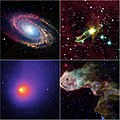Fichier:Ssc2003-06k 250.jpg


Fichier d’origine (627 × 628 pixels, taille du fichier : 97 kio, type MIME : image/jpeg)
Historique du fichier
Cliquer sur une date et heure pour voir le fichier tel qu'il était à ce moment-là.
| Date et heure | Vignette | Dimensions | Utilisateur | Commentaire | |
|---|---|---|---|---|---|
| actuel | 18 janvier 2007 à 00:06 |  | 627 × 628 (97 kio) | Siebrand | {{Information |Description=<table border="1"> <tr><td>Image ID: ssc2003-06k</td><td>Release date: en:December 19, en:2003</td></tr> <tr><td colspan="2">Source: [http://www.spitzer.caltech.edu/Media/releases/ssc2003-06/ssc2003-06k.shtml Spitzer n |
Utilisation du fichier
La page suivante utilise ce fichier :
Usage global du fichier
Les autres wikis suivants utilisent ce fichier :
- Utilisation sur af.wikipedia.org
- Utilisation sur cs.wikipedia.org
- Utilisation sur fa.wikipedia.org
- Utilisation sur id.wikipedia.org
- Utilisation sur ko.wikipedia.org
- Utilisation sur lb.wikipedia.org
- Utilisation sur nl.wikipedia.org
- Utilisation sur ru.wikipedia.org
- Utilisation sur sk.wikipedia.org

